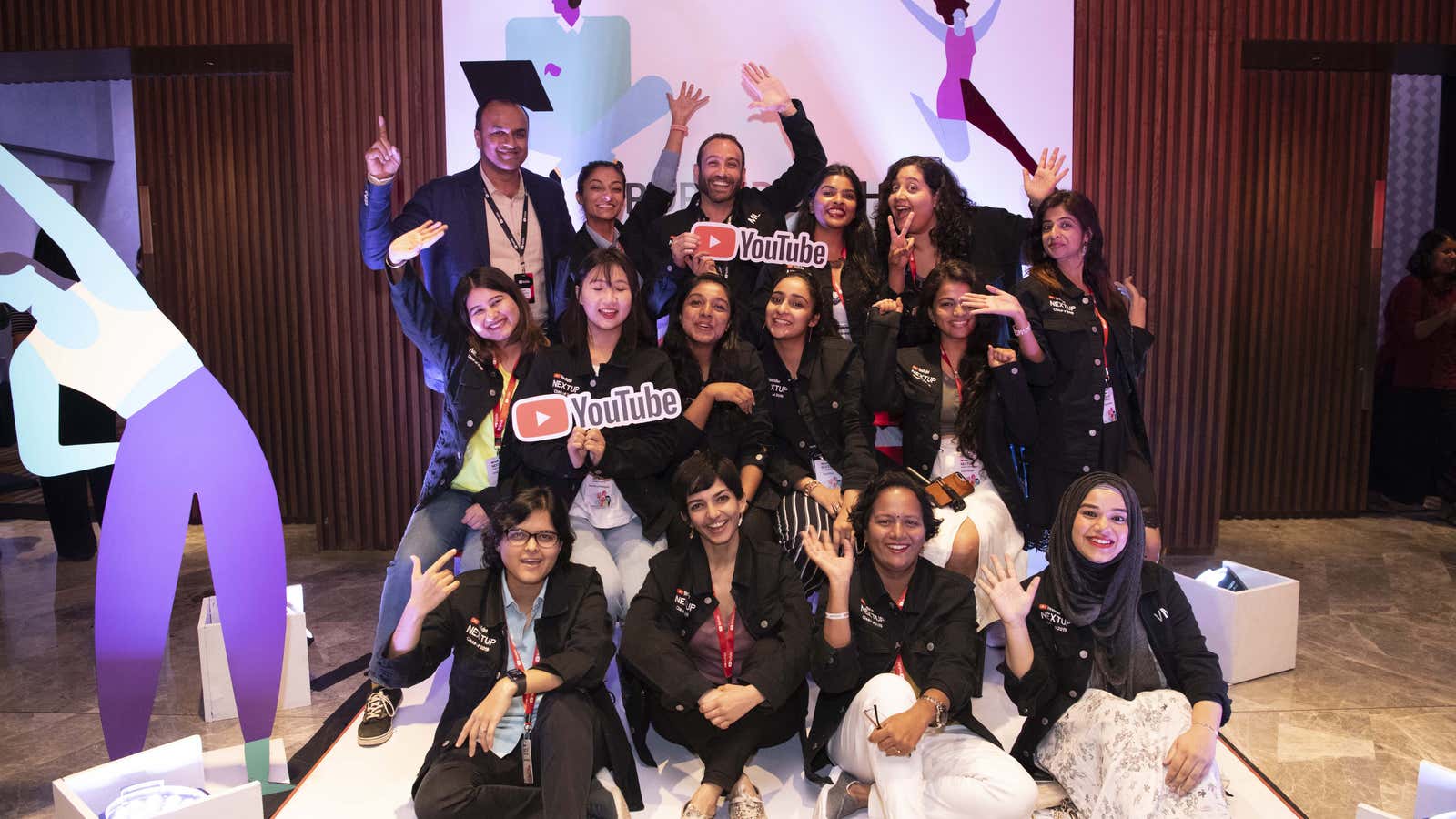Indian women are breaking gender stereotypes on YouTube.
With over 460 million internet users, India is witnessing a steady rise in the number of digital content creators. And on Google’s video streaming platform, YouTube, Indian women are taking the lead with videos about subjects—cars, technology, gaming, and farming—traditionally not associated with their gender, Marc Lefkowitz, head of YouTube creator and artist development for APAC, told Quartz India.
To support more women on YouTube, the company last week kicked-off its first-ever #WomenToWatch workshop in India, and hosted over 700 creators at its Pop-Up Space in New Delhi. “We have been and will continue to invest in growing YouTube’s vibrant community of women creators so that we can see many others join our existing stars,” Lefkowitz said in a telephonic conversation post the event.
Lefkowitz also shared insights into how Indian content creators are making their mark amid the ever-changing dynamics of digital media, among other things. Edited excerpts of the conversation:
Do you think YouTube has enough women creators on its platform?
From nearly zero women creators in 2015 to just one in 2016, three in 2017, to now a strong community of over 120 in 2019, women creators on YouTube have seen a significant rise. Traditionally male-dominated verticals like Moto Vlogging, technology and gaming are now seeing more and more women creators gaining popularity.
It’s really important that we have these role models, which is why I am here to support and encourage them. And while creating an opportunity for them, we will make sure we have enough role models for the next generation.
What is the reason for an increase in the number of female content creators on YouTube?
For us, it’s important that we invest in a diverse ecosystem. So we make a consolidated effort to fully highlight how creators can shine. We have a “creators on the rise” shelf on our trending tab that highlights creators who have 100,000 subscribers. We have seen a 60% growth this year in terms of creators that have highlighted on this shelf. And 48% of all creators being featured in 2019 are women.
Besides, YouTube NextUp has helped many women creators succeed. We have initiatives like channel memberships, super chat, and YouTube pop-ups to help creators to monetise.
Many creators are finding their voices and creating content to break the taboo around uncomfortable topics. For instance, YouTuber Sejal Kumar’s mom is a gynaecologist and she often creates content with her mom, and she has found a great following. Then, there are creators who are spreading awareness about issues faced by tribal women, or to spread a message about body positivity. We make sure they get full support, and they can reach out to more women.
Another reason which is India-specific is also how data is becoming cheap and mobile phones have been easily accessible. So anybody can now create a good quality video and upload it on the web.
What initiatives has YouTube taken to make the space safe for women creators?
We have our extremely strong community guidelines, which aim to protect female creators.
What are some of the unconventional verticals where women creators have made a mark in?
We are now witnessing channels run by women about motor vlogging, which is really interesting and has started to take off on the platform. The entire gaming genre has started to explode in India and we are seeing women gamers. Farming creators are also making the mark. For instance, there’s a woman creator who, along with her husband, makes content about farming and raising the animals at her farm.
How receptive are the audience towards these verticles?
This sort of content starts with a niche audience and then it blows. If you look at the food genre years ago, it had a niche audience. I think this year female gamers are really going to make a mark. Motor vloggers too will make a mark. If I speak to you next year, we will probably see these folks reaching to a wider section across the platform.
How is India doing in terms of content in comparison to their Asian countries?
Since the last year, India is leading the way. We have seen some of the viral trends originating from India and then going beyond. By next year, I am sure, we will see more and more trends emerging from India and reaching to the other parts of Asia.
In terms of content from India, it’s a broad net. We have all kinds of content from general social media to bigger specific content. We tend to see huge growth in content related to the local Indian languages. YouTube is no longer an urban phenomenon, with over, 60% of our watch time coming from non-metro cities, and content being created in multiple Indian languages: Hindi, Tamil, Bengali, Marathi, Telugu, and Malayalam, among others.
How do you see the digital content space changing in the upcoming years?
YouTube has always been a home for creators to find a stage in the long term. We obviously see a lot of competition with a lot of short-term content coming up, but I am pretty confident with the YouTube-style and the platform we allow to the creators to share their voice with the world is going to sustain for long and I do think in terms of our investment with the quality and the growth we have seen in the healthy educational content, we will grow and be around for a long time.
